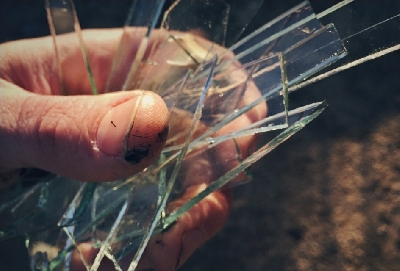This post was published by a guest. The views expressed are those of the author and do not necessarily reflect the views of Scified.com.
Glass aquariums, while beautiful and essential for aquarists, come with certain risks. Injuries from broken aquarium glass can include lacerations and cuts, posing a significant threat to anyone handling the fragments. It's crucial to understand how to handle a situation where the glass breaks to prevent harm and ensure the safety of both the handlers and aquatic life.
Preventing injury isn't just about the immediate aftermath. It's also vital to ensure that aquariums are made of the appropriate materials and are regularly inspected for signs of weakness or scratches. This proactive approach minimizes the potential for accidents, keeping both you and your aquatic inhabitants safe.
Should someone sustain an injury from broken aquarium glass, it's important to seek medical attention promptly. In severe cases, reaching out for injury claim assistance can help determine whether compensation is available.
Understanding Aquarium Glass
Aquarium glass plays a critical role in maintaining a safe environment for aquatic life. Composed of various materials, its integrity is essential to keep tanks stable under water pressure. This section covers the composition, types, and factors affecting their strength.
Composition and Types
Aquarium glass primarily consists of silicate glass, which is common due to its transparency and availability. Safety glass like tempered glass is preferred for its enhanced durability. It undergoes a process of heating and cooling that increases its strength, making it less prone to shattering. When broken, it crumbles into small granules rather than sharp shards, offering a safer alternative.
Glass tank choices vary, with an option to choose between traditional glass and acrylic tanks. Acrylic is a form of plastic that offers clarity akin to glass but is lighter and more resistant to impact. Despite its advantages, acrylic is prone to scratching more easily than glass. The trade-offs between these materials involve considerations of cost, weight, and safety, catering to different preferences and needs.
Water Pressure and Structural Integrity
The strength of aquarium glass is significantly influenced by the pressure exerted by the contained water. This pressure depends on the tank's dimensions and the thickness of the glass. Higher tanks require thicker glass to withstand the increased pressure at deeper levels.
Tempered glass offers superior integrity, aligning with its ability to handle substantial pressure changes. The edges of the glass are the most vulnerable areas; thus, careful handling is crucial. Even minor damage to the edges can compromise an entire tank's stability.
Acrylic tanks provide a different structural composition that naturally absorbs pressure, allowing for more flexibility in design and size. However, it demands regular maintenance to prevent damage from scratches, which could weaken its structural performance over time.
Handling Breaks and Injuries
When aquarium glass breaks, it can pose significant risks, including injuries from sharp edges. Immediate actions to contain water and provide first aid are crucial to ensuring safety.
Emergency Response to Breakage
In the event of a glass tank shattering, quick measures can prevent further damage and reduce injury risks. Start by relocating aquatic life to a safe container with water from the tank. Use large towels or blankets to soak up excess water and prevent flooding.
For safety, wear thick gloves to handle sharp pieces of broken aquarium glass. Carefully collect broken pieces and dispose of them in a secure container. Ensure the area is cleared of glass shards to prevent injuries to pets or people. Seek professional help if the damage is extensive.
First Aid for Glass Injuries
If a person sustains injuries due to aquarium glass breaks, administering first aid promptly is essential. Begin by gently rinsing the wound with clean water to remove any small debris. Use sterile gauze to apply gentle pressure on the wound to stop any bleeding.
For deeper cuts, cover the injury with a clean dressing and raise the affected area if possible. Over-the-counter pain relief can help manage any discomfort. Seek medical attention immediately if the cut is severe, bleeding persists, or for any concerns about glass fragments remaining in the wound. Recovery involves keeping the wound clean and monitoring for infection signs.

KYC in Gaming – What It Is and Why It Matters
The world of online gaming has come a long way over the past decade. But as the industry continues to grow, so do the risks that come with it. Today, ...

Toshi.bet Advertising Agreement: A Warning to Publishers and Investors
A cautionary warning for publishers, website owners, and investors who are approached by Toshi.bet for advertising - steer clear!

The Best Same-Day Weed Delivery Services in Etobicoke (2025 Review)
Etobicoke has quickly become one of Toronto’s most active cannabis delivery zones. With legalization now mainstream and delivery technology impr...

What Your Favorite Sci-Fi Movie Reveals About Which Casino Game You Will Be Good At
Your go-to sci-fi film can reveal more about you than you might think, especially in terms of what you choose to watch for fun. The characters you roo...

Stuck on Your Story? 4 Forbidden Fiction Writing Methods You Won’t Learn in School
Read this article to discover four fiction writing methods that traditional classes never cover. These unconventional techniques will help you push cr...


